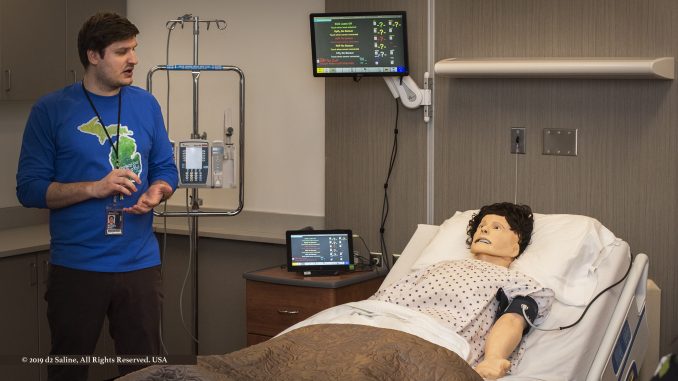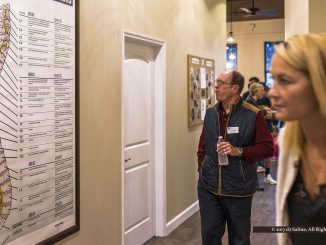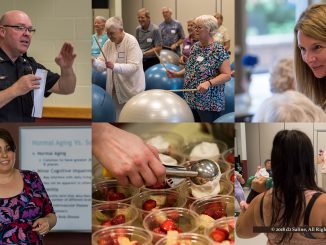
The phrase “drive-by nursing” was recently used by a cardiac catheterization lab nurse to provide context for schedule number concerns arguably behind a threatened strike in New York. [1]
One of the first interactions that comes to mind when thinking about nursing is an overnight hospital stay. According to the most recently available statistics from the Centers for Disease Control and Prevention (CDC), almost 93% of all American made it through the twelve months prior to being surveyed without spending a single night in one. [2]
Compare that to just 56.7% who managed to stay out of emergency rooms (some of which obviously overlapping with the statistic above). [3]
If you are a recipient of healthcare, chances are that your most frequent and hands-on dealings will be with nursing staff. In addition to the 63% of registered nurses employed in hospitals, another 26% work in patient contact settings that include care facilities and physician offices. Study findings suggest that staffing shortfalls such as those being spotlighted in New York may be as much a matter of pragmatism as anything else: There is a currently a nursing labor pool shortage — and it looks to be getting worse. [4,5]
During our sit-down interview last spring with Washtenaw Community College (WCC) president Dr Rose Bellanca, she encouraged Saline Journal to return for a close look at how her institution would continue to leverage technology in support of addressing deficiency on the front end. On April 6 we did so, focused on access to their Nursing Simulation Lab during campus access for “Free College Day.” [6-11]
Lab Simulation Coordinator Benjamin Morhan, RN, introduced the environs by noting that the overall area spans 2,800 square feet, setup at a cost of $450,000. Supporting staff includes six members plus another ten teaching faculty. In addition to serving as a resource for the 270 nursing program students at WCC, the labs are used in to support the practicum in parallel degree programs at nearby Eastern Michigan University. [12]
Nurse Morhan provided tours of four key areas in just one of the labs. Two were indistiguishable from single patient rooms typical at St Joseph Mercy Hospital in Ypsilanti. One had a bed occupied by $76,000 Gaumard S2200 “Victoria,” capable of being configured to replicate “realistic birthing experiences, including normal delivery, breech, shoulder dystocia and C-sections,” and “complete with programmable vital signs, head movement, crying and joint articulation,” according to a written release from the college. [14]
Next door was Laerdal SimMan 3G, capable of more variety in medical presentations and having come in with a price tag around $100,000. [15]
“He’s ‘high fidelity,'” Benjamin Morhan explained, “meaning as close to human as possible today.
Doctors can intubate him. He can talk. We can fill him with fluids, blood, urine. You can listen to his bowels. Put a light in his eyes and his pupils will react — realistically. He can sweat; he can cry. Students can draw blood from him.
Between the two “patient” rooms is a control center from which an operator can unobtrusively run scenarios to help develop and test student skills. Sessions typically run about fifteen minutes, after which students are typically taken into the fourth and final room for debriefings that include review of videos of their time just spent with Victoria or SimMan. The simulated patent settings are reset in less than five minutes for the next classes.
While there is far from universal agreement regarding either widespread or ongoing shortages within the ranks of US nursing professionals, most experts agree that this is very much the case in areas requiring more skilled practitioners. =Think: Intensive care and cardiac units, high-tech nursing. Simulators such as those we now have at Washtenaw Community College allow students to upskill on a wider variety of necessary experiences more quickly than they would in relying solely upon random human patient encounters. [16]
Nurse Morhan was unambigous in his summary of what this technology means. “We are here to develop elite nursing students.”
References
- “Nurses Strike in New York: Threat Increases Over ‘Safe Staffing’ Levels” Patrick McGeehan (March 30, 2019) The New York Times.
- “Summary Health Statistics: National Health Interview Survey, 2017 [Table P-10a]” US Department of Health and Human Services, Centers for Disease Control and Prevention (CDC).
- “National Hospital Ambulatory Medical Care Survey: 2015 Emergency Department Summary Tables [Table 1]” CDC.
- “Employment Statistics” Minority Nurse.
- “Workforce” American Nurses Association.
- “‘Everybody Isn’t Cut Out for Trade Work,’ Advises Dr Rose Bellanca, Washtenaw Community College President” Dell Deaton (May 21, 2018) Saline Journal.
- Washtenaw Community College (home page).
- “Nursing at WCC” Washtenaw Community College (WCC).
- “WCC cuts ribbon on nursing labs, celebrates Center of Excellence distinction” Richard Rezler (November 15, 2018) Washtenaw Community College.
- “Nursing at WCC: Simulation Lab” WCC.
- “Free College Day” (April 6, 2019) WCC.
- “School of Nursing” Eastern Michigan University.
- “St Joseph Mercy Ann Arbor” Saint Joseph Mercy Health System.
- “Victoria S2200” Gaumard.
- “SimMan 3G” Laerdal.
- “Is There a Coming Shortage of Nurses?” Elaine K Howley (November 28, 2018) US News & World Report.



